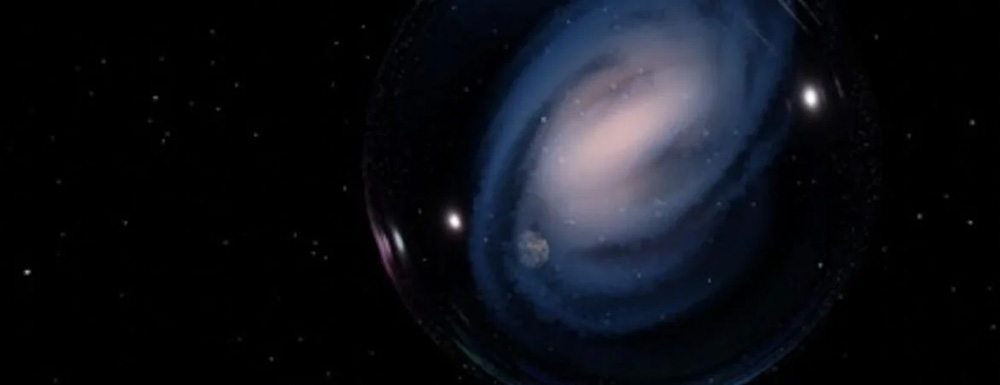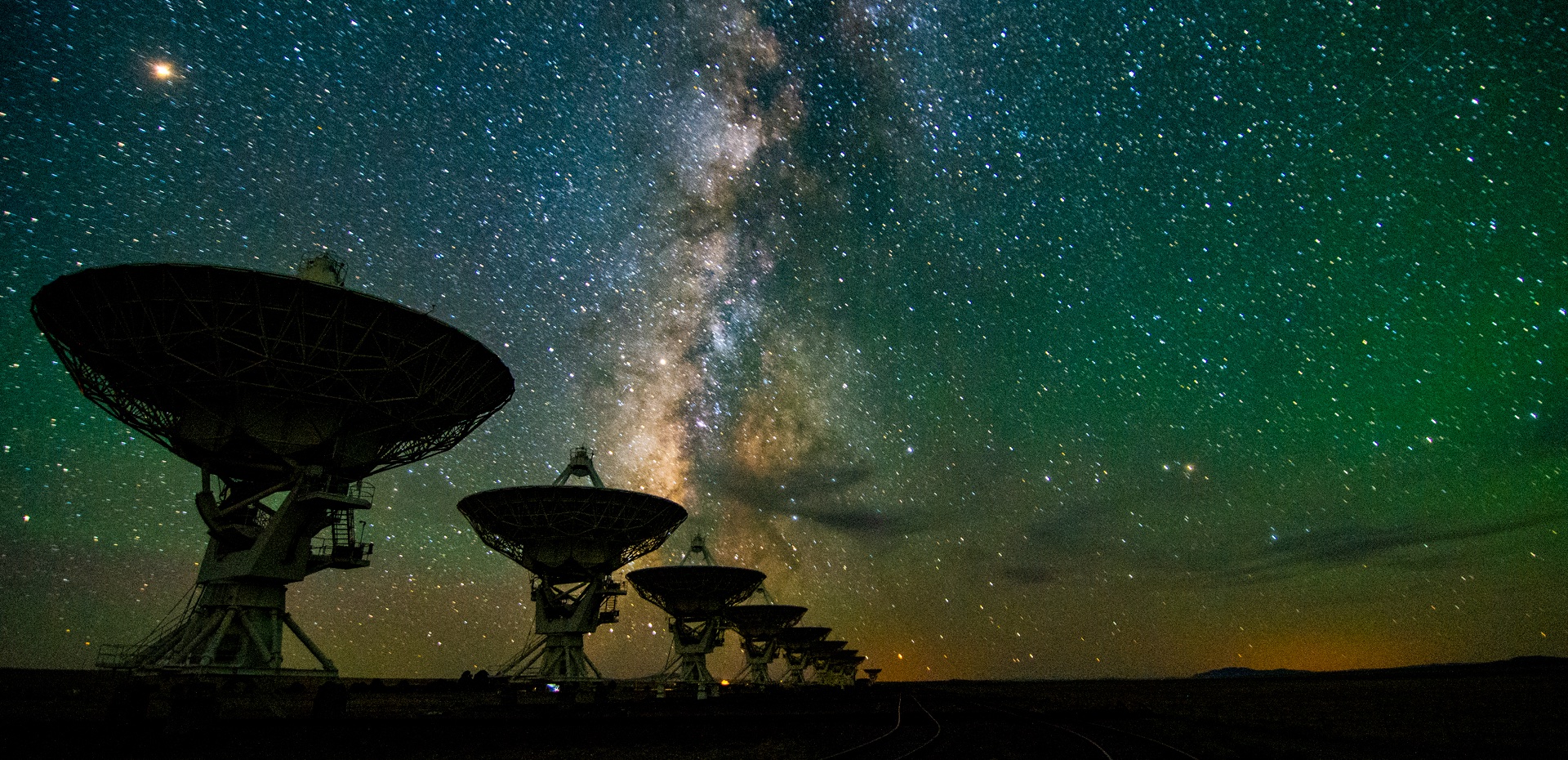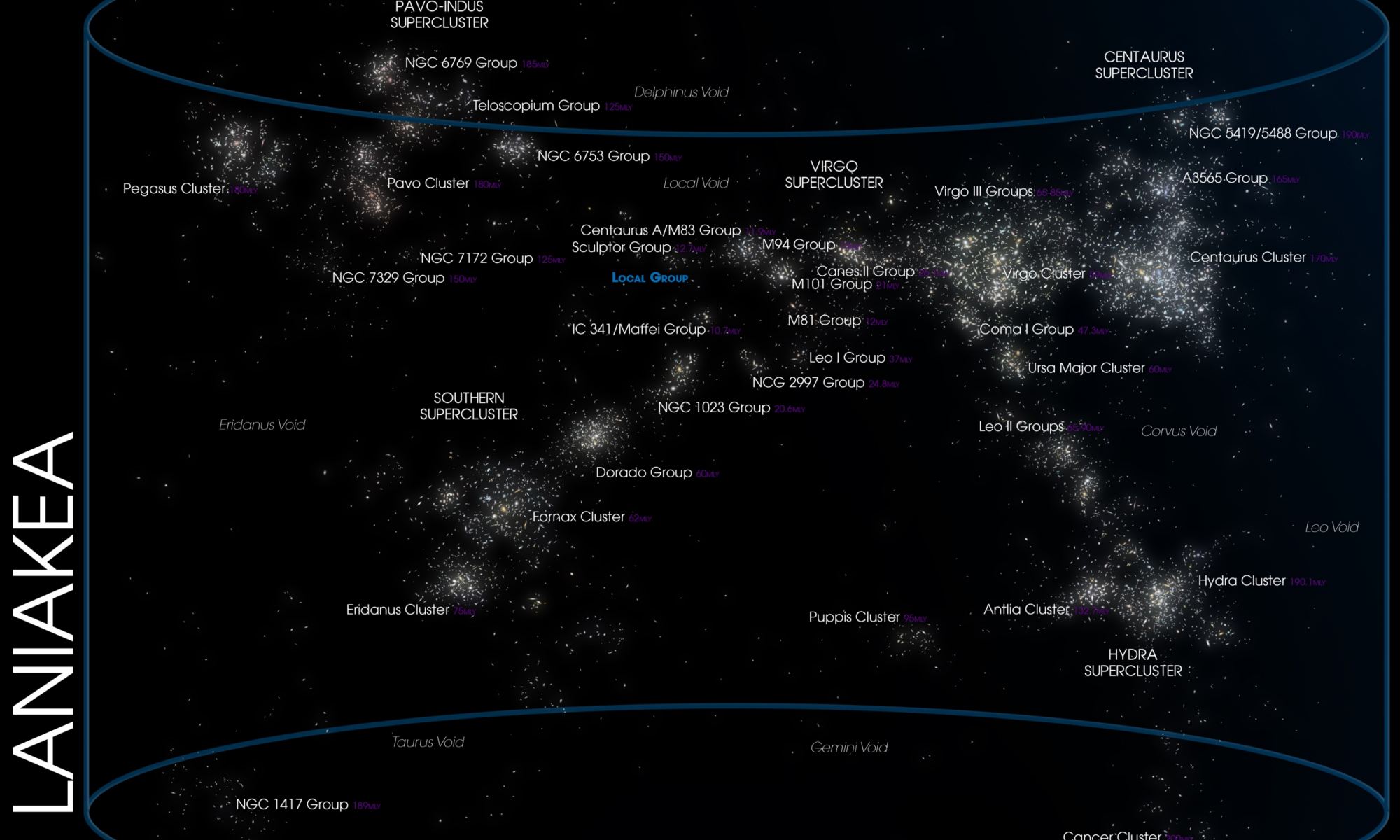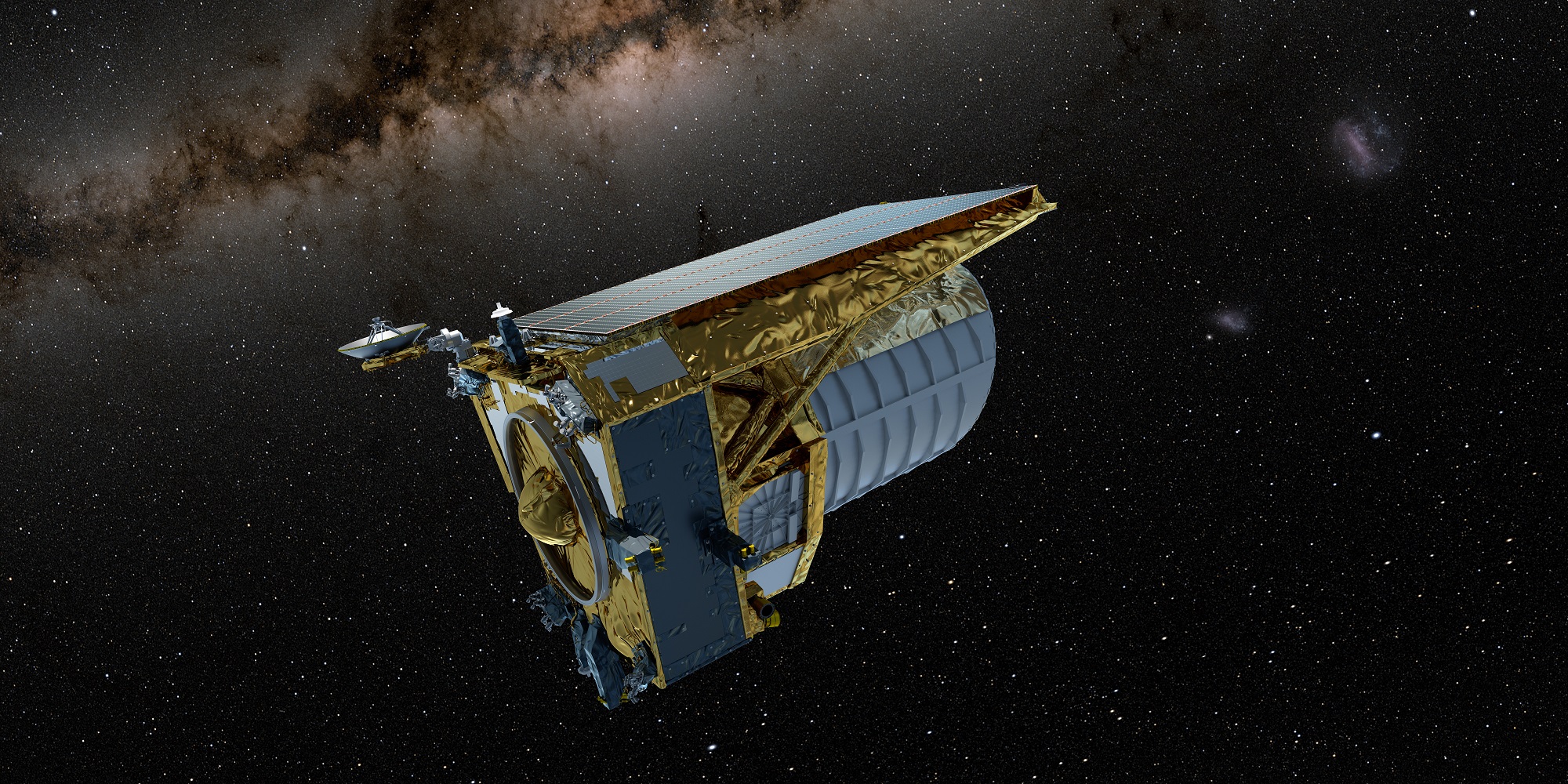Spiral galaxies like the Milky Way are like cosmic snowflakes—no two are exactly alike. For many years, astronomers thought spirals couldn’t exist until the universe was about half its present age. Now, a newly discovered galaxy in the early Universe is challenging that idea.
Continue reading “The Early Universe Had No Problem Making Barred Spiral Galaxies”There Aren’t Many Galaxies Like The Milky Way Nearby. Now We Know Why
The Milky Way is a barred spiral galaxy, maybe even a grand design spiral galaxy. We can’t be sure from our vantage point. But one thing is certain: there aren’t many disk galaxies like it in our part of the Universe called the supergalactic plane.
Continue reading “There Aren’t Many Galaxies Like The Milky Way Nearby. Now We Know Why”If You Account for the Laniakea Supercluster, The Hubble Tension Might Be Even Larger
One of the great unsolved mysteries of cosmology is known as the Hubble tension. It stems from our inability to pin down the precise rate of cosmic expansion. There are several ways to calculate this expansion, from observing distant supernovae to measuring the Doppler shift of maser light near supermassive black holes, and they all give slightly different results. Maybe we don’t fully understand the structure of the Universe, or maybe our view of the heavens is biased given that we are located deep within a galactic supercluster. As a new study shows, the bias problem is even worse than we thought.
Continue reading “If You Account for the Laniakea Supercluster, The Hubble Tension Might Be Even Larger”The Largest Simulation of the Universe Ever Made

It’s about time to retire the old astronomy joke: “Define the Universe and give three examples.” That’s because recent simulations are answering that question pretty well. Nowadays, the answer could just very well be, “See the FLAMINGO simulations.”
Continue reading “The Largest Simulation of the Universe Ever Made”Everything in the Universe Fits in This One Graph. Even the Impossible Stuff
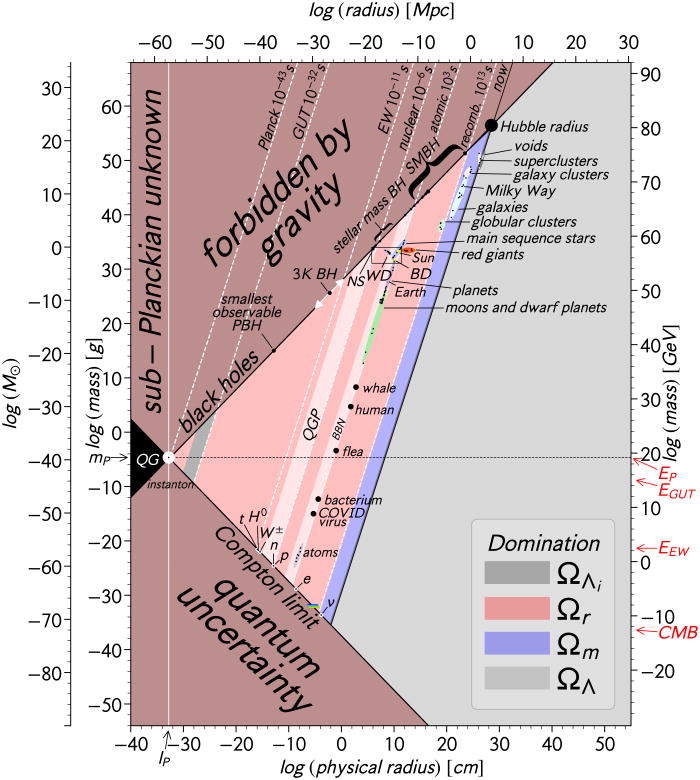
The Universe has physical constants, such as the force of gravity that define everything. If these constants were any different, our Universe would look quite different. When you consider the types of objects that exist in our Universe – from quarks and bacteria to fleas and superclusters — different forces dominate their existence.
A fascinating new graph plots everything in the known Universe and shows us what’s possible. It also shows what types of objects are prohibited by the laws of physics as we understand them.
Continue reading “Everything in the Universe Fits in This One Graph. Even the Impossible Stuff”More JWST Observations are Finding Fewer Early Massive Galaxies
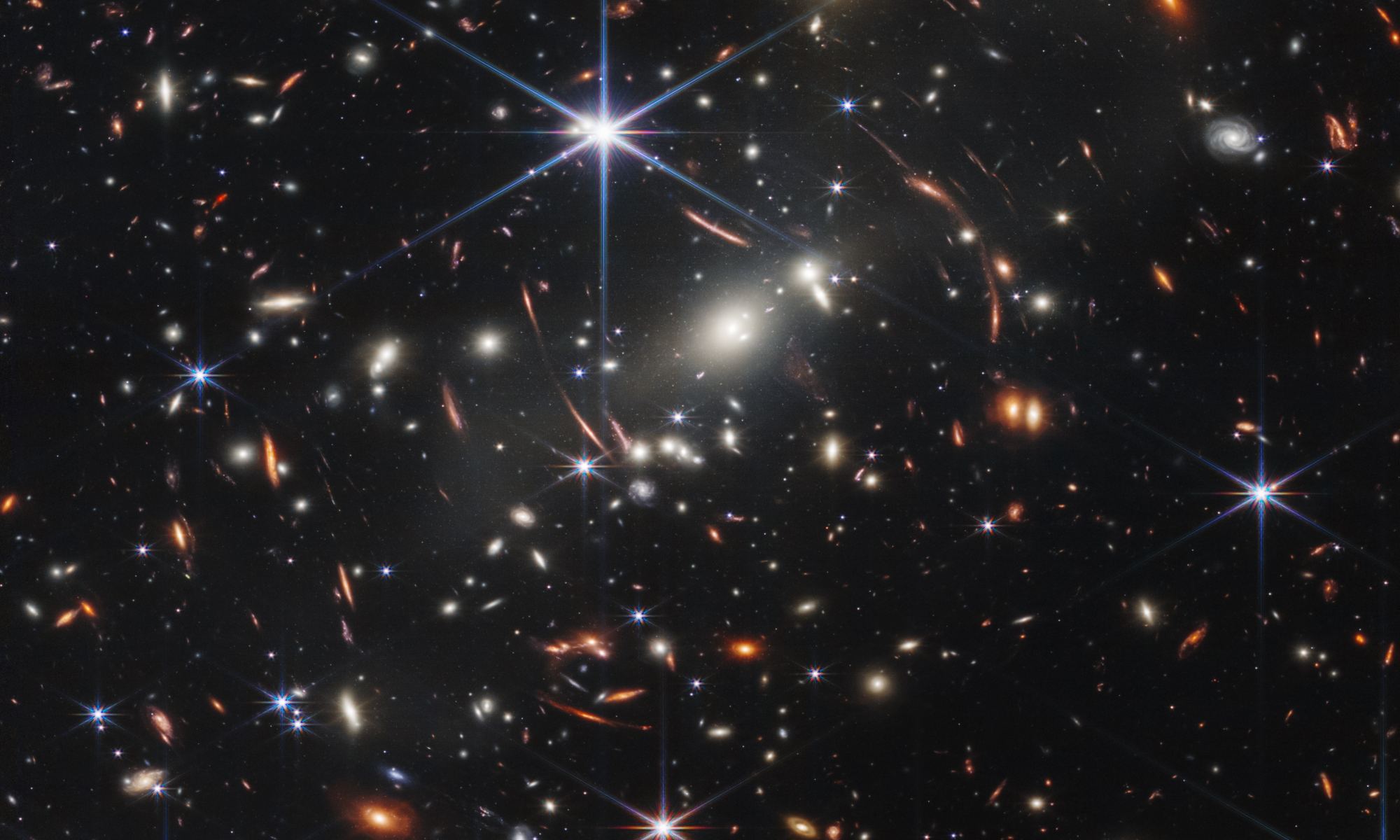
There’s a common pattern in science. We develop some new process or tool that allows us to gather all kinds of data we’ve never had before, the data threatens to overturn all we’ve assumed about some long-established theory, and then the dust settles. Unfortunately, the early stage of this process generates a lot of sensationalism in the press. Early results from the JWST are a good example of this.
Continue reading “More JWST Observations are Finding Fewer Early Massive Galaxies”Euclid Recovers From a Navigation Problem and Finds its Guide Stars Again
On July 1st, 2023, the ESA’s Euclid mission headed for space, where it began its mission to observe the Universe and measure its expansion over time. The commissioning process began well as the mission team spent weeks testing and calibrating the observatory, then flew the mission out to Lagrange Point 2 (LP2). The telescope focused its mirrors, collected its “first light,” and the first test images it took were breathtaking! Unfortunately, Euclid hit a snag when its Fine Guidance Sensor (FGS) failed to lock onto its “guide stars.”
According to the latest update from the ESA, Euclid has found its guide stars again, thanks to a software patch. With its navigation woes now solved and its observation schedule updated, the telescope will now undergo its Performance Verification phase (its final phase of testing) in full “science mode.” Once that’s complete, Euclid will commence its nominal six-year mission, providing razor-sharp images and deep spectra of our Universe, looking back 10 billion years. This data will be used to create a grand survey of one-third of the entire sky and measure the influence of Dark Matter and Dark Energy.
Continue reading “Euclid Recovers From a Navigation Problem and Finds its Guide Stars Again”Colliding Neutron Stars Could Help Measure the Expansion of the Universe
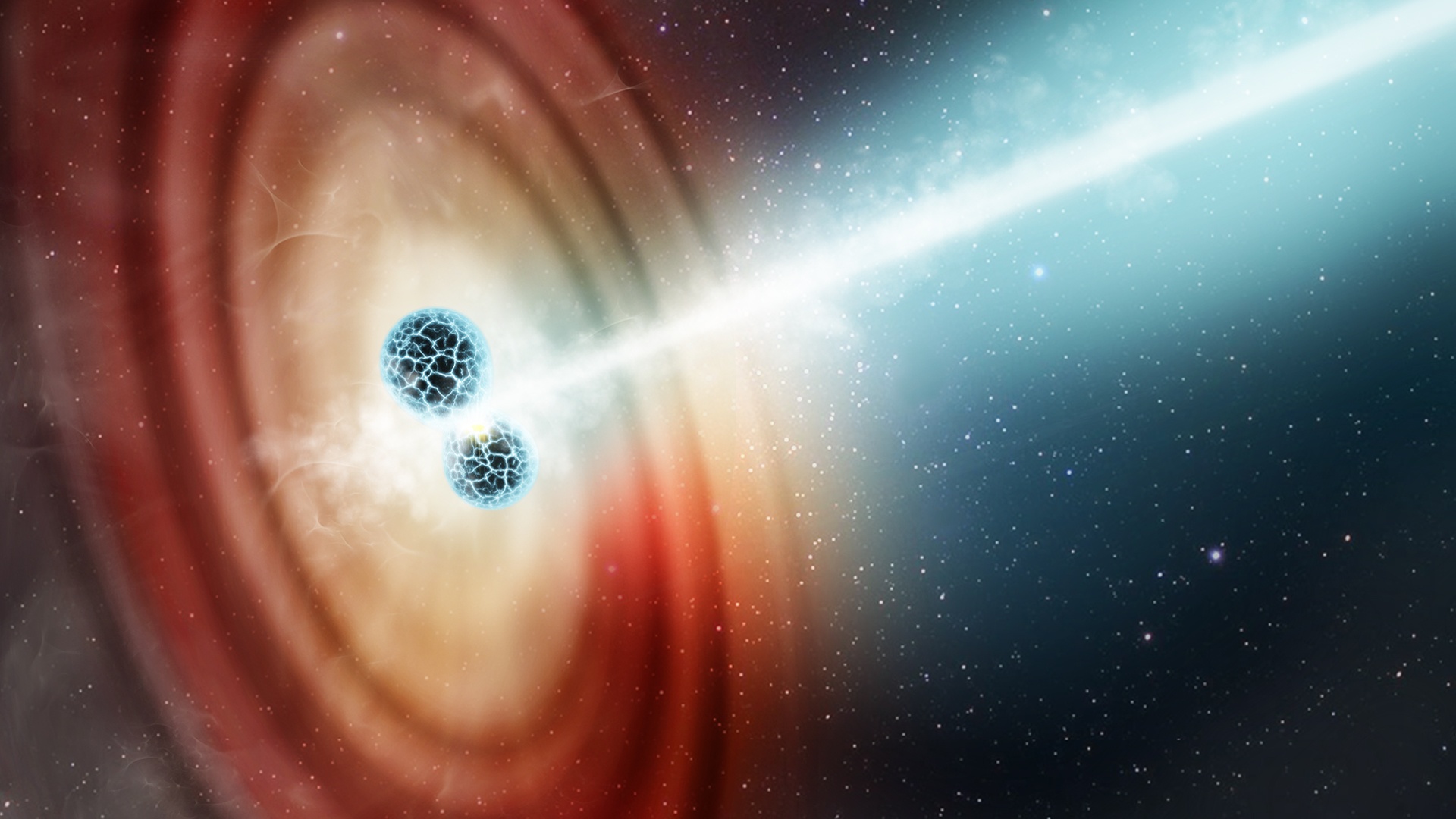
According to some in the astrophysical community, there has been something of a “Crisis in Cosmology” in recent years. Though astronomers are all aware that the Universe is in a state of expansion, there has been some inconsistency when measuring the rate of it (aka. the Hubble Constant). This issue arises from the Cosmic Distance Ladder, where astronomers use different methods to measure relative distances over longer scales. This includes making local distance estimates using parallax measurements, nearby variable stars, and supernovae (“standard candles”).
They also conduct redshift measurements of the Cosmic Microwave Background (CMB), the relic radiation left over from the Big Bang, to determine cosmological distances. The discrepancy between these two methods is known as the “Hubble Tension,” and astronomers are eager to resolve it. In a recent study, an international team of astrophysicists from the Niels Bohr Institute suggested a novel method for measuring cosmic expansion. They argue that by observing colliding neutron stars (kilonovae), astronomers can relieve the tension and obtain consistent measurements of the Hubble Constant.
Continue reading “Colliding Neutron Stars Could Help Measure the Expansion of the Universe”The Big Bang: What is it? Why study it? What happened before? How will it all end?
Approximately 13.8 billion years ago, the greatest event in all of existence occurred that literally created existence itself. This event is known as the Big Bang, and it’s responsible for the estimated septillion number of stars that are scattered across the vast reaches of the unknown, including the one our small, blue world orbits. However, other than knowing that the Big Bang occurred, there is still a septillion amount of information we still don’t know about the greatest event in the history of existence.
Continue reading “The Big Bang: What is it? Why study it? What happened before? How will it all end?”Seeing the Web Connecting Galaxies Across the Universe
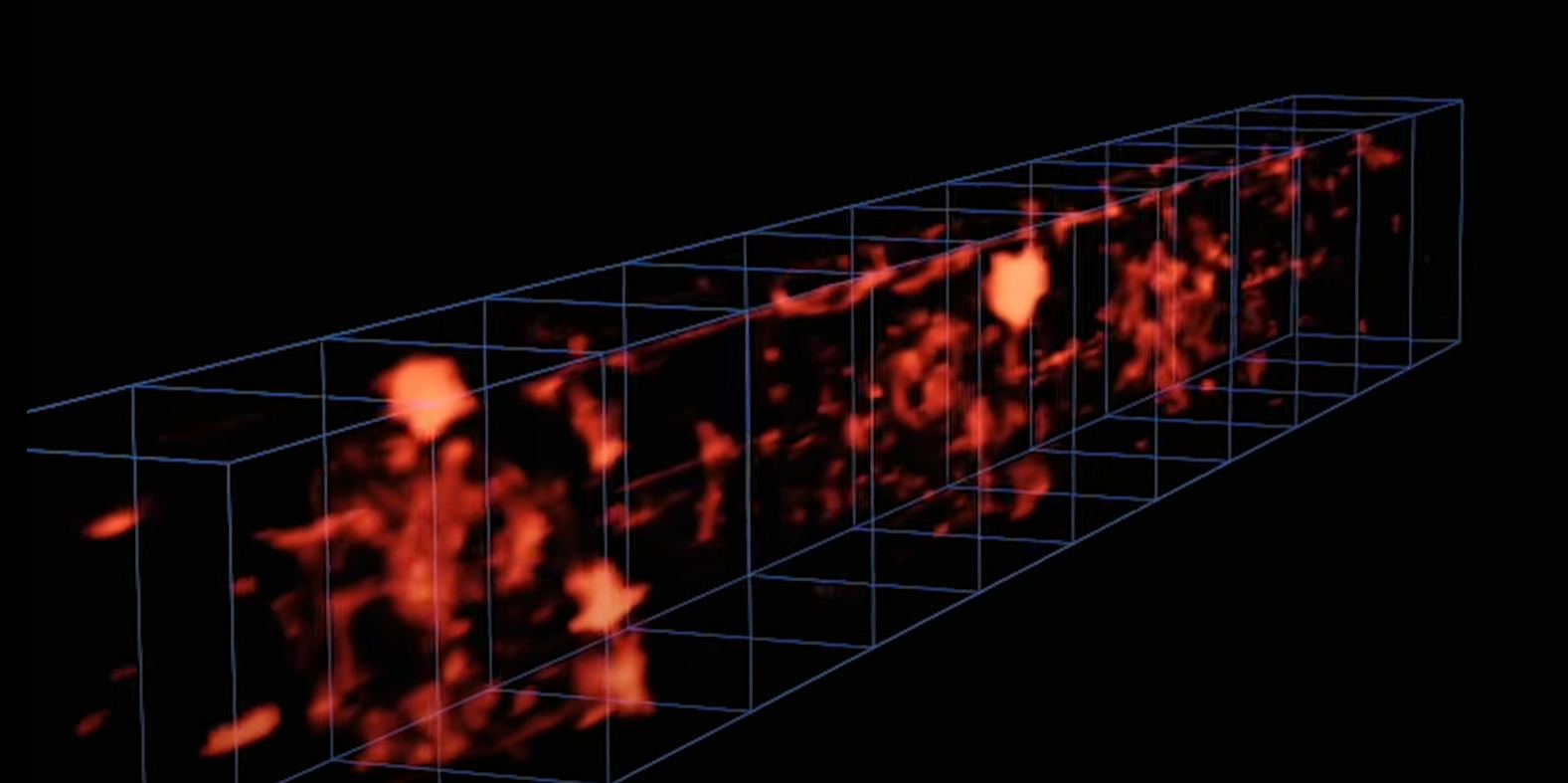
One hundred years ago, we didn’t know there was anything outside of our own galaxy, the Milky Way. Now we know that our puny planet Earth, and everything else, is part of a vast structure called the Cosmic Web. Its scale is difficult to comprehend in any concrete way, and the system’s complexity and magnitude brings our most powerful supercomputers to their knees.
Astronomers have known about the Cosmic Web for some time, as they’ve caught glimpses of it. But a new instrument has given us our most complete view of it yet.
Continue reading “Seeing the Web Connecting Galaxies Across the Universe”
